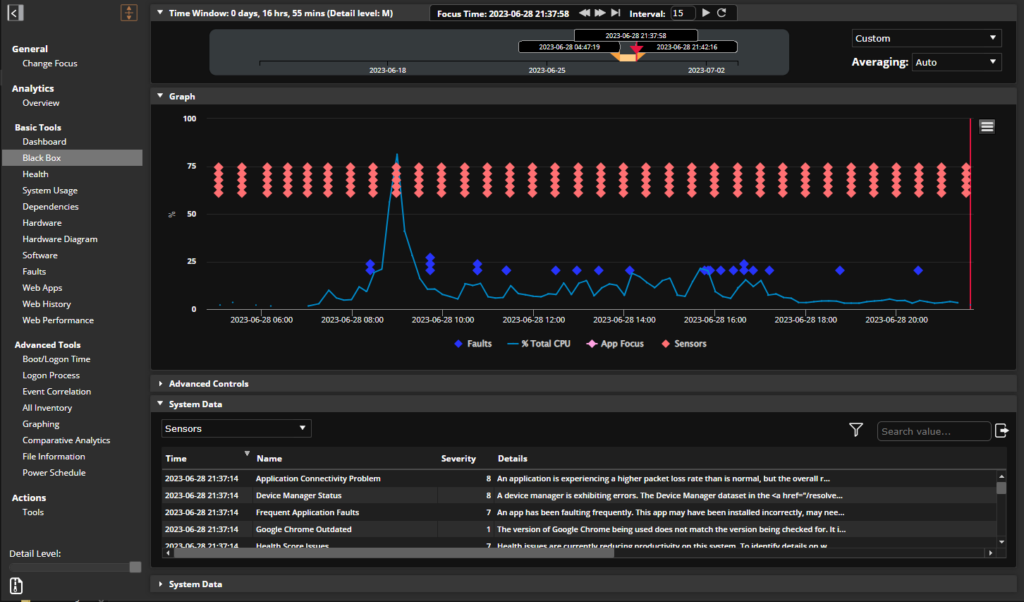
As businesses strive to reduce their environmental footprint and operate more efficiently, the focus on sustainable IT initiatives has intensified in recent years. While many organizations concentrate on data centers and overall energy consumption, one area that is often overlooked is the environmental footprint of endpoint IT devices. It’s time to pay closer attention to this ever-growing part of the digital estate, as the average enterprise manages approximately 135,000 endpoint devices!
The prevalence of remote and hybrid work environments means enterprises now need a way to account for vastly dispersed endpoint devices such as employee laptops, hand-held devices across manufacturing and warehousing, point-of-sale devices, and self-serve kiosks. Given this digital sprawl, combined with emerging regulatory requirements such as the Corporate Sustainability Reporting Directive (CSRD), a sustainable IT strategy is no longer nice to have; it is imperative.
But where do you begin? Let’s look at what the CSRD guidelines suggest about sustainable IT.
CSRD Guidelines and Sustainable IT
The CSRD sets forth a range of sustainability targets that have a direct impact on energy and carbon accounting for endpoint assets. These targets include reducing carbon footprint, using energy-efficient hardware, and optimizing e-waste management. Specifically, the Directive requires certain companies to report on these areas related to sustainable IT:
1. Energy Consumption: Companies are expected to disclose the energy consumption of their IT infrastructure, including data centers, servers, networking equipment, and other IT assets. This metric may involve reporting on energy usage intensity, sources of energy, and efforts taken to reduce energy consumption.
2. Carbon Emissions: Companies may need to report on the carbon emissions associated with their IT infrastructure and IT assets, including both direct emissions, such as GHGs from data centers, and indirect emissions, such as electricity consumption and supply chain emissions.
3. Resource Usage: Reporting on the use of natural resources associated with IT infrastructure is another aspect of climate-related reporting. Such natural resources include water, rare minerals, and other resources used in manufacturing IT assets or operating data centers.
4. E-waste Management: Many companies are now expected to report on their efforts to manage electronic waste (e-waste) generated by IT assets as part of the ESRS circular economy standard. Within this metric are details on electronic recycling programs, responsible disposal practices, and efforts to extend product lifecycles through refurbishment and reuse.
5. IT Asset Lifespan and Management: Reporting on the lifespan and management practices of IT assets is crucial. This standard may include information on the average lifespan of devices, strategies for extending their lifespan, and responsible end-of-life management, such as recycling or donation programs.
What are the Broader Implications of Sustainable IT Reporting?
CSRD reporting deadlines begin in early 2025 and will be staggered depending on certain reporting requirements. The first CSRD reports due in early 2025 will reflect the company’s 2024 fiscal year environmental performance. So time is of the essence!
Any level of reporting starts with baselines, which give IT leaders a granular understanding of enterprise technology usage and its impact on carbon emissions and energy usage. In turn, enterprises can develop strategies for reducing both.
Setting baselines depends on having complete visibility across the IT estate to monitor and measure energy use with the goal of optimizing consumption and extending the asset life cycle — all without affecting the digital employee experience. Sustainable hardware lifecycle management includes promoting a longer lifespan for hardware through regular maintenance and updates.
Lakeside Software’s SysTrack platform collects data from endpoints across the IT estate to deliver the end-to-end visibility needed to establish baselines. Organizations can easily turn this visibility into actionable insights with the dashboards and solutions provided in the Lakeside DEX Library, including the Green IT DEX pack. This pack helps organizations reduce their carbon footprint through technology performance, usage, and planning.
Get Started on Sustainable IT Baselines
By including endpoint devices is sustainability IT measurement and reporting, IT departments can
- Prioritize energy efficiency to achieve significant savings for enterprises over time.
- Extend the life of endpoint devices based on performance and health instead of arbitrary refresh cycles, ultimately reducing e-waste.
These efforts are worth it. Aligning IT practices with sustainability is not just about meeting regulatory requirements. It’s about embracing a business model that values our planet and its resources—on Earth Day and every day. The Corporate Sustainability Report Directive, other sustainability regulations, and ESG initiatives are not hurdles; instead, they are opportunities to foster an environment that benefits businesses, consumers, and our planet.
ARTICLE
What IT Leaders Need to Know about CSRD
Subscribe to the Lakeside Newsletter
Receive platform tips, release updates, news and more



